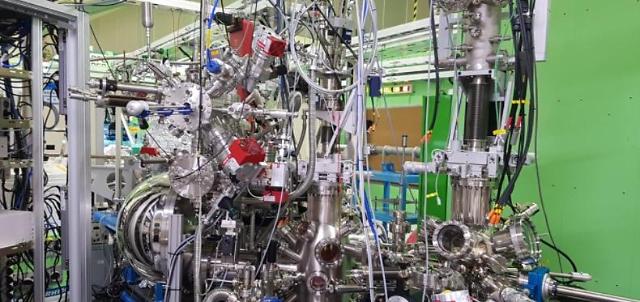
[Courtesy of IBS]
SEOUL -- An exciton is an electrically neutral quasiparticle that exists in insulators, semiconductors and some liquids. It is regarded as an elementary excitation of condensed matter that can transport energy without transporting net electric charge. Excitons are the main mechanism for light emission in semiconductors at low temperatures.
A research team led by Yeom Han-woong at South Korea's state-run Institute for Basic Science (IBS) has detected photoelectrons from spontaneously formed excitons that had only been predicted theoretically. It was the world's first observation of excitons voluntarily formed at room temperature.
To extend the life expectancy of excitons created by laser, cryogenic conditions must be maintained. Yeom's team has succeeded in observing excitons produced at room temperature through an experiment based on a theory presented by a former Soviet Union research body in 1973 that in semiconductors or semi-metals with unusual electronic structures, excitons with a long lifespan even at high temperatures can be voluntarily made.
"The discovery of excitons with a long lifespan has increased the likelihood of realizing devices and computers without resistance loss in the future," Yeom said in a statement.
In a research paper published on the website of Nature Physics, a peer-reviewed scientific journal, the research team said it has detected exciton signals by synthesizing high-quality Ta2NiSe5, a new candidate for excitonic insulator which has a layered structure stacked loosely by a weak van der Waals interaction.
"We detect the photoemission signal from spontaneously formed excitons in a debated excitonic insulator candidate, Ta2NiSe5. Our symmetry-selective angle-resolved photoemission spectroscopy reveals a characteristic excitonic feature above the transition temperature, which provides detailed properties of excitons," the team said.
The research provides evidence for preformed excitons and guarantees the excitonic insulator nature of Ta2NiSe5 at low temperature, Yeom's team said.
When stimulating the exciton with light, it collapses into a free electron and a positive hole and the electron bounces off. The research team has developed a high-performance photoelectronic spectroscope to measure photoelectrons by changing the polarization of light. Only photovoltaic electrons were generated so that researchers can confirm exciton signals. The researchers would conduct a study to control the properties of excitons and produce devices utilizing them.
Copyright ⓒ Aju Press All rights reserved.



![[FOCUS] Researchers find new method to produce large single-crystal metal foils](https://image.ajunews.com/content/image/2018/10/19/20181019113105617835_278_163.jpg)